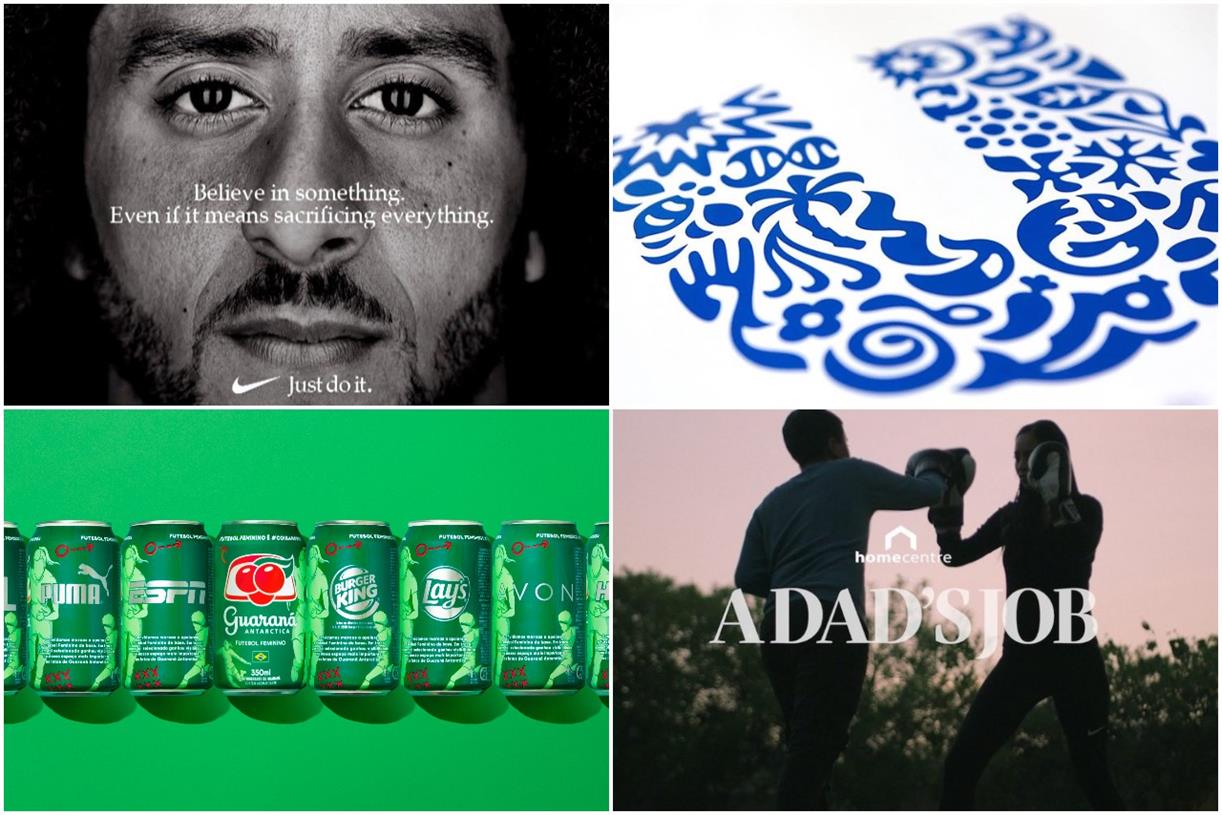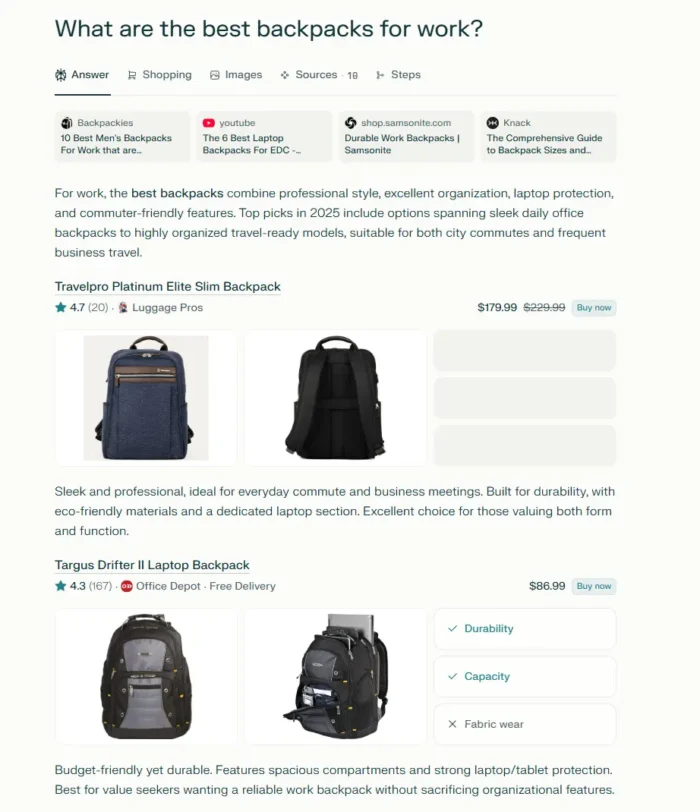Content vs Context: If Content Is King, Context Is Queen in Marketing
Learn about the difference between content vs context and how you can apply it to your own marketing efforts.

In 1996, Bill Gates wrote a simple phrase that has been used (and over-used) by digital marketers ever since: Content is king.
He was right: Content is a crucial part of basically every online activity today.
An entirely new branch of marketing — content marketing — was born thanks to the proliferation of the internet. Its importance to the average brand is proof of the power of quality content.
But you can’t just create content and expect it to do something for your brand. Content on its own does nothing. For content to work in marketing, you need … a distribution plan.
You thought I was going to say context, didn’t you? Hang on, we’re almost there.
Your distribution plan ensures people see your content. It expands your reach and allows you to connect with your audience. Your content will go nowhere — literally — if you don’t distribute it.
I’m not here to talk about distribution today (but if that’s what you’re here for, you’ll like this article).
Today, I’m going to talk about context.
Because context is what makes content meaningful to your reader. Or, less desirably, it’s what makes it meaningless.
Context is also what makes your distribution strategy a good one. Or, it could be what makes it a bad one.
It all depends on the situation.
Context vs. Content Marketing: What’s the Main Difference?
If content is king, context is queen.
You need your king alive to win a game of chess, but you’ll have more success when your queen is in play.
Let’s review:
Content is material that you can share with your audience. Content can be blog posts, videos, sell sheets, product descriptions, case studies, etc.
Context is the setting or circumstance in which a person sees your content that gives it meaning. Context can come from any number of sources, such as:
The time of day. A person’s job title. The beginning of an organization’s fiscal year. Whether or not a person even knows about your company — that’s context, too.Context can apply to situations that are very personal and nuanced, but they can also be wide-reaching, too. The coronavirus pandemic brought new context to many brands’ marketing directions. Seasonality and community traditions are context for local businesses trying to capture attention from shoppers.
As a marketer, you have no control over any person’s specific situation. But, with the right tools and strategy, you can have control over the context in which your content is received by determining the circumstances in which it is shared.
This is context marketing.
What Is Context Marketing?
Context marketing is the practice of delivering the right marketing message to the right person at precisely the right moment.
It’s more important than content marketing alone because we are all surrounded by an endless amount of content on a daily basis. We see thousands of ads every day; naturally, they lose their impact on the average consumer.
Context marketing adds a new dimension to your content so that the people who see it connect with it on a more personal level. It speaks to a specific challenge they may be facing or a specific interest they have.
This new iteration of digital marketing depends heavily on artificial intelligence, such as search algorithms, PPC bidding mechanisms, social listening tools and modern CRM software with AI integrations.
Subscribe to
The Content Marketer
Get weekly insights, advice and opinions about all things digital marketing.
Thanks for subscribing! Keep an eye out for a Welcome email from us shortly. If you don’t see it come through, check your spam folder and mark the email as “not spam.”
Different Context Marketing Examples
OK, so now that we know the difference between context and content, and what context marketing means, let’s explore some different ways context marketing has been used in real life:
1. Taco Bell Targets College Football Fans With Ads on Waze
Waze is a navigation app designed to help people drive to their destination in the shortest amount of time possible. In 2014, Taco Bell took advantage of this platform to promote their Taco 12 Packs by pushing ads every Saturday morning. The idea was that the average college football fan would likely be on their way to a football party — the perfect opportunity to share a 12-pack of tacos.
The result: 3% of users who saw the ad clicked on the “Drive There” button to take a detour to their nearest Taco Bell on their way to their destination.
Of course, suggesting that someone completely re-route their trip to take a stop at the Taco Bell drive-thru can be a big ask. Here’s where Waze adds a further level of context in all of its ads: The only locations that are advertised are always within 6 miles of the user’s current position, according to Digiday.
Taco Bell’s Taco 12 Pack was the personalized content in this example. The day of the week, time of day, viewers’ current activity (traveling via car) and their proximity to the nearest Taco Bell were all context.

2. Order Taylor’s Version at Starbucks
When Taylor Swift began re-recording her entire discography under her own ownership, all eyes were on the singer-songwriter. After successfully re-releasing her second studio album, Swift hit the ground running with a bold campaign when it came time to promote her next release, “Red (Taylor’s Version).”
The album specifically uses imagery relating to cool autumn nights and long winter days, so who better to partner with than the home of the latte: Starbucks. The coffee chain originally tweeted out “It’s Red Season,” along with a coffee, sparkle, scarf and heart emoji, using the same phrase the singer used in her own posts.

After quoting lyrics from the album all week, Starbucks announced that fans could order Swift’s favorite drink, a Grande Caramel Nonfat Latte by ordering a “Taylor’s Latte” or “Taylor’s Version.”
But that isn’t all the singer and coffee chain did. Starbucks announced that fans could stop in stores across the country and hear the new album playing throughout the day. They also offered Swift-themed Starbucks e-gift cards.
The release of Swift’s new album and her got-to order were the content. However, the time of day and location Starbucks customers went to get their daily cup of Joe (or in this case, Taylor) was the context. Although the coffee chain and singer didn’t release any official metrics on how the campaign went, we can only assume it was “All Too Well”.
3. Styled by Levi’s — A Pinterest Partnership
Pinterest, an image sharing and social media site used by millions, often serves as the go-to place for those in need of fashion inspiration. At the end of 2018, its partnership with the iconic clothing brand Levi’s felt as natural as a perfect pair of well-worn jeans.
 The brands worked together to develop a tool that offers a first-in-market, personalized styling experience based on a visual questionnaire and style insights from users’ individual Pinterest activity. After doing the short quiz, users are automatically given a Pinterest board that suggests clothing tailored to their tastes as well as an editorial image to spark ideas for how to wear them.
The brands worked together to develop a tool that offers a first-in-market, personalized styling experience based on a visual questionnaire and style insights from users’ individual Pinterest activity. After doing the short quiz, users are automatically given a Pinterest board that suggests clothing tailored to their tastes as well as an editorial image to spark ideas for how to wear them.
For its fashion-forward users, Pinterest serves as the context in this example, whereas Levi’s data-driven, personalized styling experience acts as the content.
4. Get Moving With Nike and Apple
Nike and Apple are no strangers, having worked together to create some of the world’s most well-known products and campaigns for over 20 years. However, the brands’ ongoing work on the Nike+ app might just be the ultimate masterclass in context marketing.
The partnership started as a way to bring music from Apple (the content) to Nike customers’ workouts (the context) through Nike+iPod. Since then, the collaboration has evolved to become what we now know as Nike+.

Using activity tracking technology built into athletic gear, users’ Apple iPhone apps automatically sync, track and record workout data with ease. As it nears its 6th birthday, the app continuously offers users new improvements, more personalized content and other add-ons to take their workouts to the next level.
How To Fold Relevant Context Into Each Piece of Content
Context can make a big difference in your digital marketing success. However, it’s important to approach context marketing thoughtfully. Without a strong plan and the right data, your context marketing strategy will, well, lack context.
Follow these steps to build out your context marketing strategy:
1. Know Your Audience
The most important part of the real-world marketing efforts we covered was that each brand knew their audience really well. They had given a lot of attention to the thought process these people were likely going through. If you don’t already have detailed buyer personas and targeted audience examples, now is the time to make them.
2. Consider Their Pain Points and Obstacles
Context marketing aims to make the customer journey more intuitive and streamlined for the buyer. Find out where in the sales funnel people get hung up, and why. Use this information to brainstorm ideas on how to help them overcome these obstacles.
3. Create Supportive Content
Your content strategy should be based on the obstacles you need to help your potential customers overcome. For example, if customers have trouble understanding how your solutions address their specific needs, consider creating case studies, informational articles or explainer videos to demonstrate this. If customers are unsure which solution is right for them, create product sheets that detail specifications of each of your products or services. If one of your challenges is brand awareness, create introductory content like an “about us” video.
4. Use Personalization Tags Or Dynamic Features
Here’s where your marketing automation software and CRM data will come into play. Context marketing is all about personalizing experiences whenever possible. Set up triggers that will provide the most helpful information to your audience at the right time.
Here are some ideas on what context marketing might actually look like:
A retail website deploys a chatbot to ask potential customers if they need help after they’ve visited multiple product pages. A retargeting ad is displayed in search or on social media after a prospect visits a product page without making a purchase. A cart abandonment email is sent to a user after leaving a website without buying the items in their cart. A smart form displays new fields the second time a site visitor fills out a form to collect unique information without making the user re-enter the same basic details. A case study is emailed to a prospect who has downloaded a white paper and visited a product page. A mobile ad is displayed when a user is in proximity of a retail location.How To Fold Relevant Context Into Each Piece of Content
Let’s go back to the beginning of all of this. The concept of content being king is a nice and tidy phrase that digital marketers love to repeat.
But since we’re on the topic of context, let’s look at the context in which Gates wrote it.
The internet was in its infancy. Google wouldn’t even appear for another two years. Gates talked about Microsoft’s emerging news venture called MSNBC.
Despite how early in the age of the internet this essay was written, Gates had a clear view of what would carry out over the next several decades. One part, in particular, stands out to me as almost prophetic:
“If people are to be expected to put up with turning on a computer to read a screen, they must be rewarded with deep and extremely up-to-date information that they can explore at will. They need to have audio, and possibly video. They need an opportunity for personal involvement that goes far beyond that offered through the letters-to-the-editor pages of print magazines.”
This is still true today; if we expect people to tune into our brands, or spend their time researching our products, we have to make it a personalized and rewarding experience. We can’t expect people to pay attention to us just because we’ve worked hard at creating content for them.
Instead, it’s up to us as marketers to make sure our audiences are seeing content they’re actually interested in, in a way that resonates with them and at the right moment in their daily lives. That’s where content marketing becomes context marketing.
Editor’s note: Updated February 2022.

 BigThink
BigThink 
































